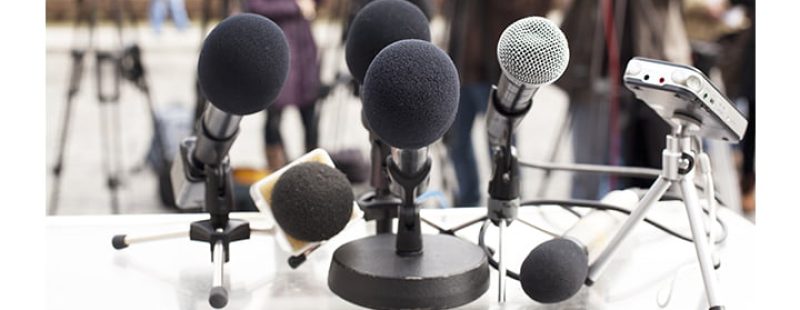Simply put, publicity molds public opinion more effectively than a paid advertisement. Your message, as it appears in the context of the “news,” or being interviewed as an expert carries additional weight in the court of public opinion. Therefore, keeping on message is the most important part of your job.
With social media opportunities of re-posting your segments, the value of being in the media is transcended to infinite abilities to reuse those digital clips in promoting your message. This fact needs to be reemphasized: if you’re on TV, Radio or in Print, those same files are now placed in online digital format 99{fb2cd6ecc5ea822e7d55867f94952838aab4b89ae39846a722113040866900c7} of the time thereby giving you the opportunity to reuse those files in marketing, promotion or public relations efforts of your organization.
However, the message starts with your initial pitch to media. You should always remember that in order to make news, your challenge is to tell a compelling story. When you start with your pitch, always consider the reasons why an editor, reporter or producer should listen to, and, give you credibility by telling your story? Is your “pitch” or “hook” formulated to fit the “C’s” of news? Editors look for: Catastrophe, Chaos, Conflict, Confusion, Competition, Contradiction, Corruption, Crime, Crisis and Color (Human Interest) – And, you can’t forget the “S’s” of news: Secrets, Sensationalism and Sex.
Obviously, media outlets look for news that provides information, news that is timely, news that relates to a specific and unique action, as well as how it impacts the local the community. Creating the compelling story is up to you, but explaining it is where most stray from the message.
With major cutbacks in most media outlets, reporters, editors and producers currently scramble to do more work in less time to produce the story. Simply put, your job is to hand them everything they need for a story on a silver platter… and quickly.
One point that should be made crystal clear: “NO COMMENT” is NEVER an acceptable option when talking with the media. Always tell your story and don’t exaggerate or lie. If you ever need additional time to compose your message, always ask for it. Most media outlets are on a deadline, so understanding that time is of the essences is key to your message being told in a positive manor.
For the purpose of this blog, we will focus on the content of your message when responding to media inquiries. With that said, your message development or content should focus on Brevity, Emotion, Positive Points and Preparation.
Brevity: Your complete thoughts and statements in answer to a posed question should be 12 to 20 seconds long for television, 8 to 20 seconds for radio and 40 seconds for print interviews.
Emotion: What you say is as important as how you say it. Your energy, enthusiasm, excitement and entertainment factors will portray and instill a strong connection with your audience.
Positive Points: To stay on message, you must develop positive points, themes and messages that should be used frequently throughout an interview.
Preparation: Being well rehearsed with facts, figures, statements, taglines and your key messages truly makes a difference in the outcome of your interview.
Always keep in mind that when being interviewed (with the few exceptions of doing live segments), you will most likely be edited. You must be resolute to get your message across effectively. Even in hour-long live radio talk show segments, repeating your message is vitally important to the success of your message getting across.
In baseball, getting to”Home Base” is (I got rid of the) one of the most important parts of winning a game. You might hit a home run; you might hit a single and a double or a triple and another single. Your entire goal is to get to home base. Therefore, in communicating your message, you may be asked numerous questions, but need to have a cohesive statement that will tie every question to your “Home Base” message.
In relating your message to the “Home Base” principle, your main message needs to be a simple, easy to understand phrase that can be used multiple times throughout your interview. Remember, that you have a limited amount of time to get a good sound bite. You may be interviewed for 30 minutes, but your edited version may be 30 seconds or 3 minutes. What would you like your message to be? Consistently answering questions with a derivative of your “Home Base” message will more likely ensure that the main message your conveying will be heard clearly as the outcome of the produced segment.
For example, when doing an interview for a book, you might want to answer each question by telling your message in a short story, but your goal is to sell books. So, your communicated message should always end in, “as stated in the book,” “you can buy the book,” “if you get the book,” or “you can order the book today at Amazon, etc.” Emphasizing a clear message with a direct call to action or a direct statement, such as “Buy the Book” as your home base, should prove positive results. In order for this to work, you must stick to having a clear-cut “Home Base” message strategy.




